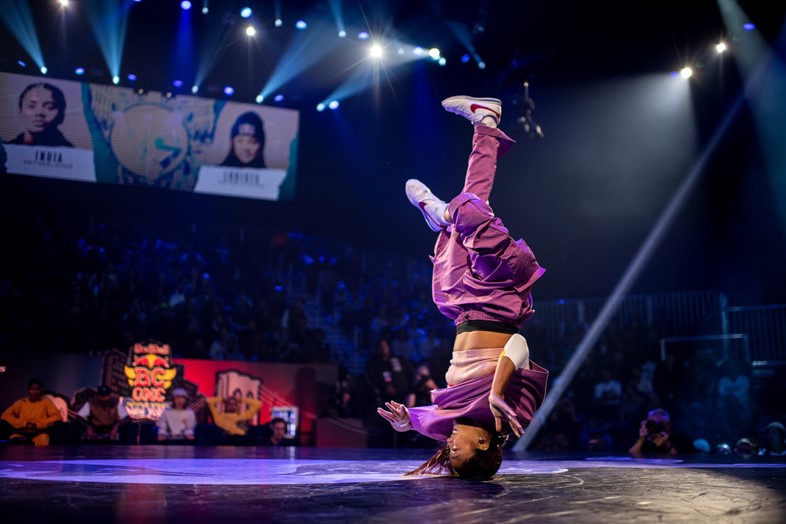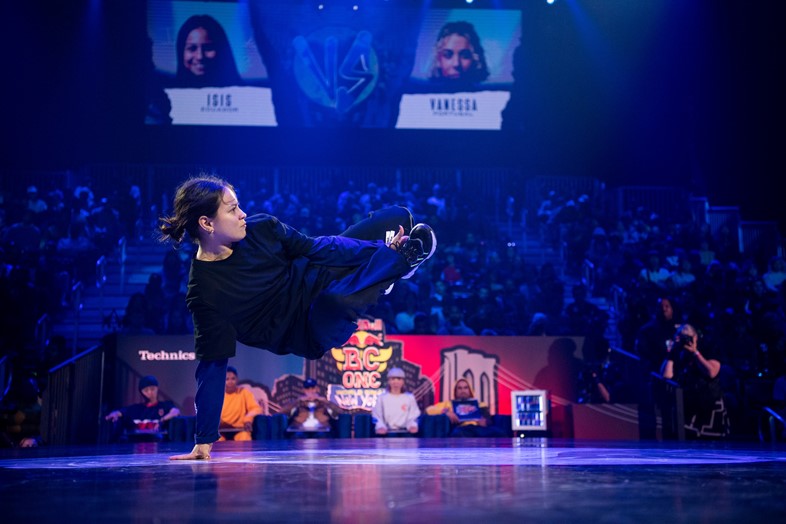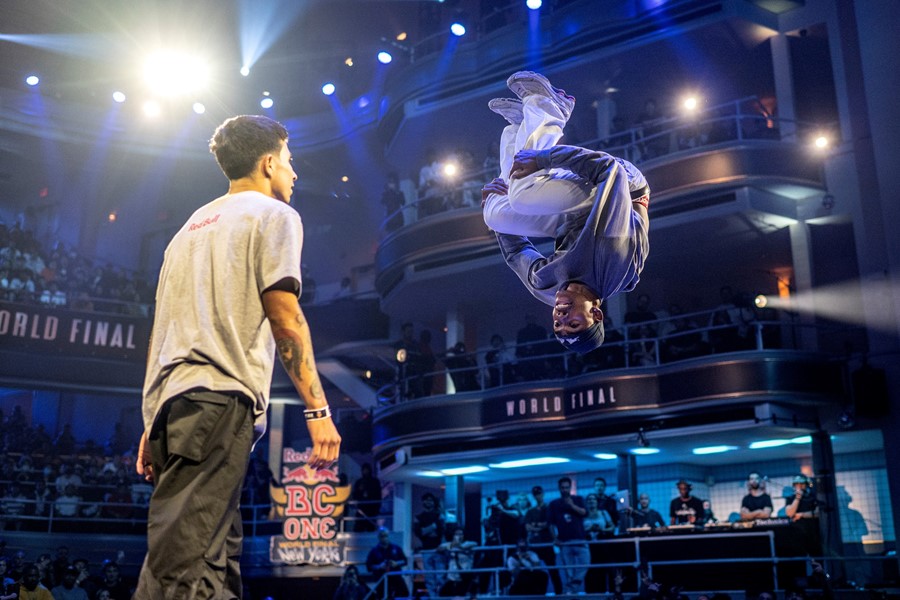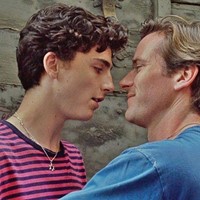Breaking is burgeoning in popularity across the globe and will soon be an Olympic sport. But as it crosses over into the mainstream, the practice risks losing its subcultural edge
Breakdancing (or breaking, as its practitioners prefer) is standing at a crossroads. Considered part of the “four elements” of hip-hop, alongside rapping, graffiti and DJing, it first emerged in the 1970s on the streets of the Bronx. The first B-boys and B-girls were typically Black and Puerto Rican youth, who lived on the margins of New York City. Requiring no expensive equipment or technical training, it was an art form that emerged out of poverty and oppression – people often got into breaking because there was nothing else to do. Today, it’s a global industry and, as of 2024, will be an Olympic sport.
The dance itself has evolved, too, becoming more athletic and elaborate – at the top level, it now resembles gymnastics more than anything. While most breakers welcome this mainstream recognition represented by the Olympics, some fear that the practice risks losing its counter-cultural edge and becoming divorced from its hip-hop roots. Last month I went to Red Bull BC One in New York – often considered the most prestigious breaking competition in the world – to find out where breaking is heading.
While hip-hop culture and breaking have always been entwined, the first breakers weren’t dancing to hip-hop – simply because it didn’t exist yet. To begin with, it was mostly carried out to funk music; the name derives from the “break” in, say, a James Brown song, when all the instruments cut out except for the beat. While breaking developed within Black culture, the dance itself drew on a wide range of influences. It was heavily inspired by ‘uprocking’, a 1960s style of dance built around foot shuffles, body drops and hand gestures, known as ‘burns’, which were intended to convey a kind of metaphorical aggression. While uprocking was a multiracial and city-wide phenomenon, it was associated with Latin Americans as well as the Black community. In the early days of breaking, moves from 1970s Kung-Fu films were another source of inspiration.
It wasn’t until the early 1980s that breaking, alongside hip-hop music, fully exploded in popularity in New York. At the time, people from outside of the scene often misinterpreted it as being literally violent. On one occasion, a newspaper photographer was called out to shoot a “riot” that had broken out in Washington Heights, only to arrive and discover a group of Black teenage boys who had been arrested for dancing. Breaking began to spread out from the Bronx and became popular in the nightlife scene of downtown New York, where B-Boys and B-Girls would perform at the coolest parties and gallery openings by artists like Jean-Michel Basquiat. It came to be viewed as a symbol of irrepressible urban vitality. Writing in the Village Voice in 1981, dance critic Sally Banes argued that, “Breaking is a way of using your body to inscribe your identity on streets and trains, in parks and high school gyms[...] it is a physical version of two favorite modes of street rhetoric, the taunt and the boast. It is a public arena for the flamboyant triumph of virility, wit, and skill. In short, of style.”
Just before the beginning of the AIDS crisis, the early 1980s were a furtive time for queer nightlife in New York, and breaking played a generative role in this subculture too. The dance became synonymous with Paradise Garage, a club night mostly frequented by Black and Brown gay men and overseen by Larry Levin, an iconic DJ who is often credited with prefiguring the rise of house music. Another notable attendee was Keith Haring, an artist who attempted to capture the frenetic energy of breaking in his work. Today, the role that breaking played in queer culture is typically under-acknowledged, which perhaps reflects a bias towards the histories of white gay men.
From its subcultural roots in New York, breaking eventually became a nationwide craze. One of the first big crossover events was when B-Boy Richard “Crazy Legs” Colón starred in Flashdance, a wildly successful film that helped to turn breaking into a fully-fledged cultural phenomenon. Throughout the 80s, the increasing commercial success of hip-hop music and the rise of MTV took breaking from inner-city New York to the suburbs of white America. Since then, even if it’s less a common fixture in hip-hop videos, it has maintained a place within the culture, whether that’s reality TV shows like So You Think You Can Dance or thriving grassroots scenes in cities across the world. The reason the Paris Olympics committee decided to include it was precisely because they wanted to appeal to younger viewers, which is testament to its continuing relevance. Whether it’s still a subculture is hard to say: on the one hand, it still largely exists outside of the mainstream, and there are breaking scenes in some of the most volatile and oppressed areas in the world. But in recent years it has become a more commercially viable venture, as events like Red Bull BC One would attest, and top-flight B-boys and B-girls can enjoy large Instagram followers and sponsorship deals.
Hip-hop music remains an integral aspect of the form. But according to Logistx, a B-girl from San Diego and a member of the elite Red Bull BC One All Star Crew who made it to the finals of this year's event, that relationship is no longer as strong as it once was. “Unfortunately, I don’t think there is as much of a connection as there used to be,” she tells Dazed. “Growing up I remember seeing Erykah Badu having music videos with Crazy Legs and throughout the 80s and 90s, breakers were featured in hip-hop music videos. There was a lot of collaboration. Now, I feel like there’s been a separation. I don’t know when that happened. But I really hope that we become more connected as we move forward.”
For Lee, a 21-year-old B-boy from the Netherlands and a finalist at this year’s competition, the Olympics can only be a good thing. “I think it is going to be great for breaking in general. It’s going to mean a lot of exposure, for sure,” he says. “A lot of people that don’t know about breaking will know about it.“ But on the other hand, he believes it’s important that breaking doesn’t become a sport like any other. “In the future, we need to hold on to the dance and the art aspects, and don’t let that get taken away.”

While breaking is big business in some parts of the world, this is not evenly spread. Isis, a B-girl from Ecuador, hopes that the 2022 Olympics will inspire governments everywhere to start taking it seriously. “I think it will be a big opportunity for everybody,” she says. “It will provide an opportunity for the community to get support from governments and companies, because depending on what part of the world you live you might not get support. I don’t want to speak for every country but I can talk about Ecuador, where there’s no support at all.”
Like any art form, breaking has evolved over the years. According to Tony Wave Wesley, an original B-boy who works with New York’s Universal Hip-Hop Museum, breakers today are less concerned with rhythm and more focused on “power moves”; in other words, gratify-defying displays of gymnastic prowess. “They don’t dance on beat now,” he says. “Before, B-boying was based on rhythm, on being smooth and creative. When we were dancing, there was more of an element of building up to a power move, but breakers today aren’t as concerned with that. It’s much closer to the gymnastic realm than the B-boy realm.” He doesn’t think this is a bad thing, so much as a natural evolution, but does suggest that it represents a move away from the original culture. “It’s been turned into a sport for financial gain and for popularity,” he says. “I mean, they didn’t put it in the Olympics because they wanted to see the little Black boy or Brown person or really anyone from the inner city make it. So does it deserve to be there? Of course it does. But it’s not because of any music.”
As Tony sees it, this development doesn’t pose a threat to B-boy culture – it’s just something different. “The Olympics most likely will be a different type of dance, with break dancing in it,” he says. “So the gymnast will become the B-boys and B-boys will become the gymnasts.” It’s important, he says, that the origins of breaking are not forgotten. “You always have to go back to the roots to get the real understanding of why it was done that way, you have to inject Grandmaster Flash, you have to inject James Brown, because that’s where you get your soul from,” he says.

At the Red Bull BC One event itself, held at the Hammerstein Ballroom in Manhattan, the level of technical skill on display was incredible. It’s easily as impressive as gymnastics or ballet, or any feat of athleticism you could mention. Some of the moves don’t seem like they should be humanly possible: the breakers are spinning around on their heads, elbows and wrists in a way that’s so smooth and frictionless it’s like they’re flying on the ground. At this level, everyone is virtuosically skilled: what really separates the best breakers is style – what Banes described in 1981 as “the flamboyant triumph of virility, wit, and skill.” Logistx, in particular, dances with real charisma and humour, sticking her tongue out, smirking and swaggering across the stage. The best dancers, Lee and Isis among them, manage to pull off staggering feats of athleticism while still keeping in time with the beat, still evidently being guided by the music. This shows that however mainstream breaking gets, however much the dance evolves, the spirit of those early days in the Bronx will always endure.




